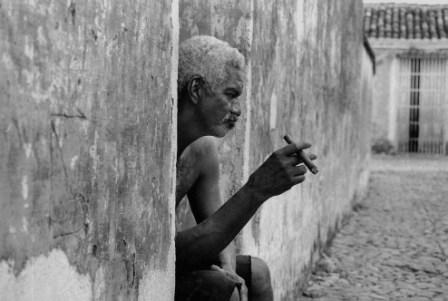My First Encounter with the Crisis
Daisy Valera

The bitter years of the “Special Period” crisis will never pass for those who experienced them. I almost dare to assure that all Cubans born and yet to be born will never be able to rid themselves of the memory of those times.
Through the magic of the cinema, Cuban film director Gerardo Chijona’s movie Boleto al Paraíso (Ticket to Paradise) takes us back to the year 1993.
After seeing it, I recalled how I came face to face with the Special Period for the first time.
As I was born in 1988, I was too young to retain in my memory the sharpest features of the ‘90s.
Yet I remember that I never again tasted that yogurt that came in a small white plastic cup, or smelt the scent of the caustic soda cleaning fluid out on my great-grandfather’s patio, or saw a plate of lentils (which I detested with all the force that a seven-year-old girl can muster).
But it wasn’t until 2004 that I understood what those years had meant to my people.
Though encounters were usually less violent by that time, I collided with the Special Period crisis in a senior high school classroom.
A new Spanish/Literature teacher who had recently graduated in art history gathered us together for the screening of the movie Madagascar. Back then I didn’t even know who Fernando Perez was (my favorite director in Cuban cinema).
From that moment on I stopped referring to my missing plate of lentils to highlight the worst of that period.
Fernando Perez crafted the film so that the dialogue and characters reflected suffering, bitterness, stress and uncertainty.
He showed the happiness of those who were able to eat chicken but who were not sufficiently untroubled that it wouldn’t burn.
He showed the constant housing swaps to get a little bit of money, the lack of professional development and the caravans of bicycles.
He spotlighted the crisis of a teenager who one day is a hippie and listens to rock, another day is religious and gathers together all the hungry children she can find in the street, and on yet another day decides to talk with the fish in the pond.
We see someone who would repeat in their dreams the anguish of everyday living.
All these are the images of Madagascar.
Madagascar was not simply the title of the movie. It came to be the symbol of the place to where all Cubans who were suffering wanted to escape. It was a place of hope…hope that was more necessary than the air we breathed at that moment.
I was able to relive the 1990s sitting in front of the screen of a Chinese Panda-brand television. The experience didn’t last more than two hours, but it was enough. I couldn’t stop crying.
The pain of that day reappears from time to time, just when I realize that now, in the 2000s, many Cubans long for Madagascar.





